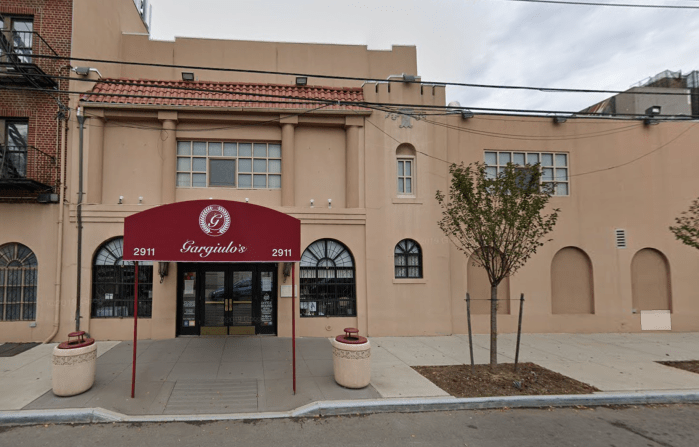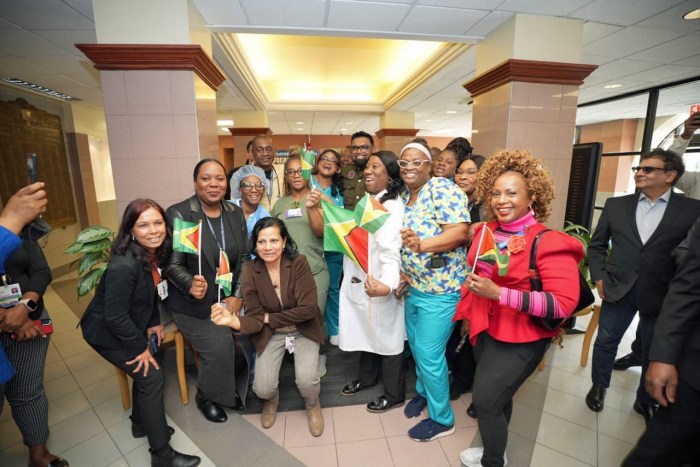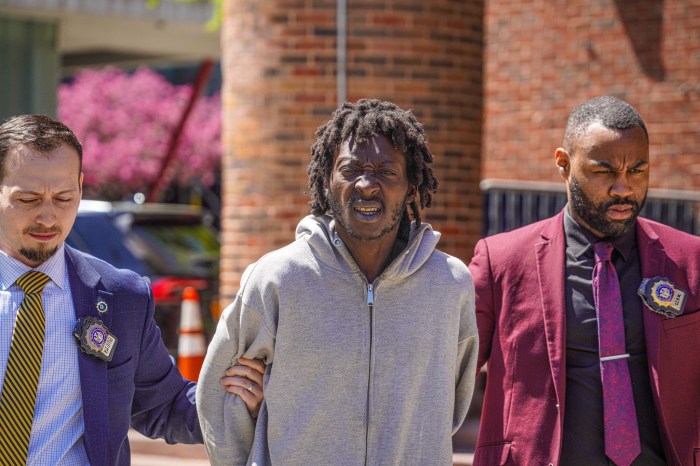“Hot to Trot” is director Gail Freedman’s fabulous, crowd-pleasing documentary about same-sex ballroom dancing. The film profiles two couples, Ernesto Palma and Nikolai Shpakov in New York and Emily Coles and Kieren Jameson in San Francisco, over four years, starting in 2012. Freedman gracefully captures the beauty and energy of the dancers — as well as the tensions that arise — as they prepare for the 2014 Gay Games and a nail-biter of a competition.
Freedman wisely allows viewers to get to know — and in the process care about — all her subjects, who discuss their coming out, their family life, and their health. “Hot to Trot” shows how dancing provides inner strength and a sense of community to these men and women.
The filmmaker recently chatted, via Skype, about her film.
GARY M. KRAMER: Do you dance ballroom?
GAIL FREEDMAN: I danced when I was younger, but it was more modern, ballet, and jazz. I didn’t have a background in ballroom, but now I want to take lessons.
KRAMER: What were your criteria for the couples you profiled?
FREEDMAN: I met Emily and Kieren on my first shoot at the 2012 April Follies. I knew right away I’d use them. They were great dancers, attractive, and really comfortable with me and in front of the camera. They had interesting backstories. They were a well-oiled machine.
I also wanted a male dance couple. I wanted one that was new, to see what happened with a new partnership. I met Ernesto in New York and within five minutes, he told me his entire life story. But he didn’t have a dance partner at that time. When Ernesto wanted to go to the Gay Games, he convinced Nikolai, who never danced same-sex ballroom before.
But he went to an event with Ernesto and they danced, and we talked, and it was clear that this was a really interesting combination. I started shooting them together and then I wanted to learn more about Nikolai. I shot a get-to-know-you session, but he opened up and we used a lot of that footage in the film. It was very liberating and meaningful. I knew they were keepers.
KRAMER: One of the important things about shooting dance on screen is to show the full bodies. You do that throughout “Hot to Trot,” but you also do shoot a few close-ups to capture the emotions and the dancers’ concentration on their faces. Can you talk about your approach to filming?
FREEDMAN: Joel Shapiro, who was my primary cinematographer and has shot a lot of dance, which I had not, said there are all these rules — which we broke: you show the whole body, you don’t break the frame, you don’t move your camera. But we couldn’t be on the floor during competition. Rehearsing was a different story. I wanted sweaty close-ups, gasping for breath, and a hand on a back and the sweep of the room and the gorgeousness of the choreography.
KRAMER: There is an intimacy in the partnerships that I think you capture well. We feel the bond between the couples. Can you talk about this — how the couples relate and respond to one another?
FREEDMAN: Most dance couples are not life couples. They practice 20 hours a week. These relationships are difficult to navigate. There’s this creative tension between Ernesto and Nikolai, which is good for the film, and I think in the film it was good for each of them that they expressed that.
Ernesto says, “Nikolai gives me what I am not, and I give him what he is not.”
KRAMER: We get to know the dancers, their struggles in their personal lives, their relationships with their parents and their partners. I love the dignity they all had. Can you talk about how you presented them?
FREEDMAN: LGBT rights are the civil rights issue of the time. We have a core gay audience, but I really wanted the film to have a crossover mainstream appeal. I didn’t want to make a teachy-preachy film. You got to know these people where their humanity, in its fullest sense, just unfolds. I didn’t know what was going to happen with their lives. We were going on this journey together. They all have dignity, and they were gracious enough to let me in and share that. They trusted that I would portray them in an honest, not saccharine way.
KRAMER: It’s interesting that most of the subjects in your film, including the competitors, are largely foreign. Why do you think that ballroom is not bigger in the US or among gays and lesbians?
FREEDMAN: I think it’s becoming bigger in the US, but dance in general, and ballroom in particular, is much more prominent in European culture. That doesn’t happen as much here. Same-sex dance began in Europe, so a lot of dancers and LGBT dancers came to America because of acceptance, and that helped build the culture here. “Dancing with the Stars” helped. Latin dance doesn’t require as much space, and in New York there aren’t many places to dance standard.
The immigration thing is interesting. I didn’t set out to make that a sub-theme, but it became a strong and important part of the story — the intersectionality of marginalized communities. It became intentional, where originally it was a happy coincidence.
KRAMER: There is also an emphasis on community and the importance of self-expression. What observations do you have about how the LGBT community engages ballroom?
FREEDMAN: I think that there is something about the supportiveness of the community that is not mirrored at a mainstream competition. Everybody cheers for everyone else, even if they screw up and their competitors get a better score. It’s small-p political even as they express their creativity and artistry. It’s important to them. Dance is a sport at the Gay Games, and not at the Olympics. And you can be amateurs. It’s about inclusion, personal best, and community. That’s why same-sex dance will continue to thrive.
HOT TO TROT | Directed by Gail Freedman | First Run Features | Opens Aug. 24 | Quad Cinema, 34 W. 13th St. | quadc































